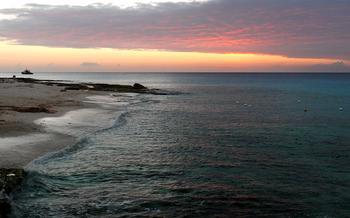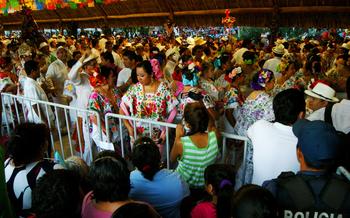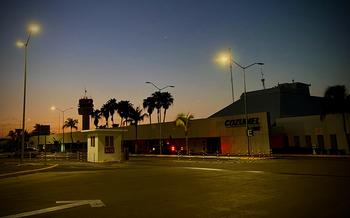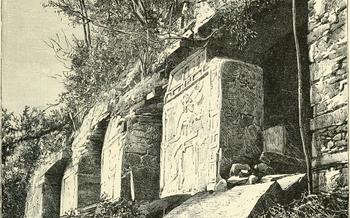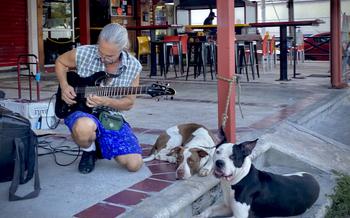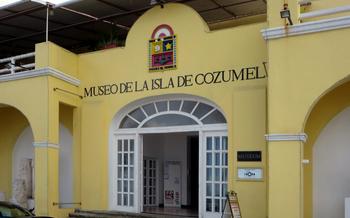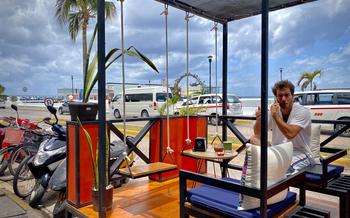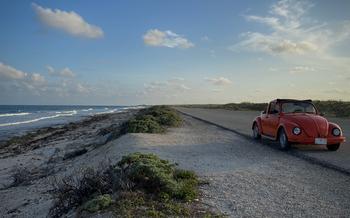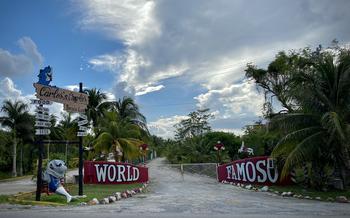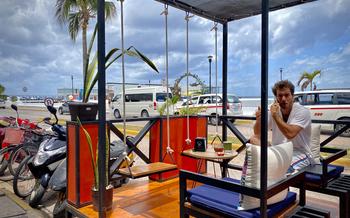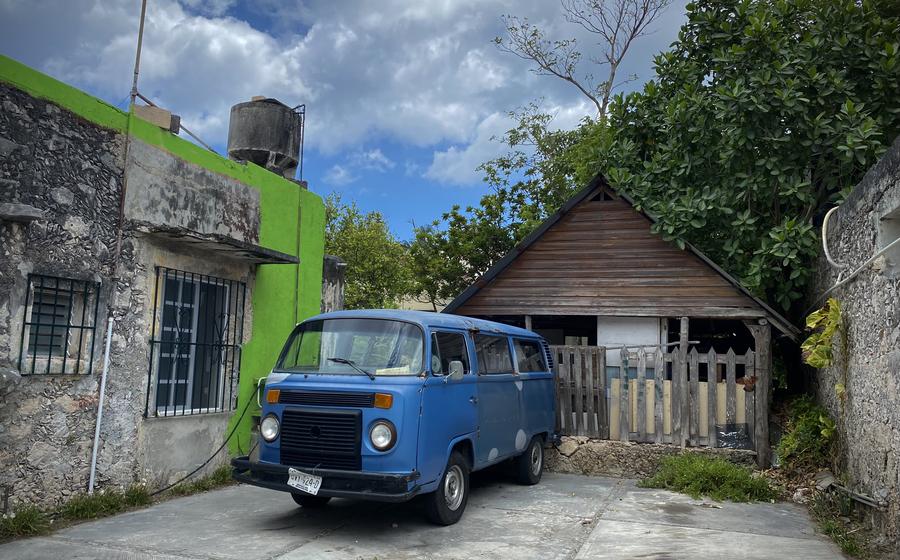
El Caracol Mayan Ruin
- El Caracol Mayan Ruin: An Enigmatic Legacy
- Unveiling the Architectural Masterpiece
- A Journey Through Time
- Interpreting the Mysteries
- A Glimpse into Mayan Astronomy
- Exploring the Spiritual Connection
- Uncovering the Administrative Function
- A Thriving Mayan City
- Experiencing El Caracol Today
- Preserving the Legacy
- Immerse in the Mayan Culture
- A Must-See for History Buffs
- Capture the Essence
- Respecting the Sacred Ground
- Insider Tip: Unveiling Hidden Gems
El Caracol Mayan Ruin: An Enigmatic Legacy
El Caracol, nestled on the picturesque island of Cozumel, stands as a testament to the ingenuity and cultural prowess of the ancient Maya. This iconic ruin, dating back to the Classic period (250-900 AD), holds a captivating allure, not only for its unique architectural features but also for the enduring mysteries surrounding its purpose.
El Caracol, meaning "The Snail" in Spanish, derives its name from the spiral staircase that forms its central core. This distinctive feature, along with its circular design, sets it apart from other Mayan structures. The ruin's exceptional preservation has allowed intricate carvings and inscriptions to endure, offering valuable insights into the beliefs, customs, and knowledge of the ancient Maya.
Theories abound regarding the specific function of El Caracol. Some posit that it served as an astronomical observatory, with its alignment allowing for the precise observation of celestial events. Others suggest that it was a religious temple, a sacred space for rituals and ceremonies honoring Mayan deities. Still, others propose that it functioned as an administrative center, a place where Mayan leaders governed and made decisions for their city-state.
Whatever its precise purpose, El Caracol stands as a testament to the advanced civilization that once thrived on Cozumel. It invites visitors to embark on a journey through time, to unravel the secrets of the Maya and to marvel at their enduring legacy.
Unveiling the Architectural Masterpiece
El Caracol stands out among Mayan ruins for its distinctive circular design, a unique feature that sets it apart from the more common rectangular structures. This circular shape has been the subject of much speculation, with some scholars suggesting it represents the cyclical nature of time or the movement of the cosmos. The central feature of the ruin is its spiral staircase, a marvel of Mayan engineering. The staircase winds its way up to the temple's second level, providing access to a panoramic view of the surrounding jungle and the sparkling Caribbean Sea. The intricate carvings and inscriptions that adorn the staircase and the walls of the temple offer glimpses into the rich symbolism and mythology of the ancient Maya. These carvings depict various deities, animals, and celestial bodies, providing valuable insights into the beliefs and practices of this ancient civilization.
A Journey Through Time
The history of El Caracol is deeply intertwined with the rise and fall of the Mayan civilization. Built around the 13th century AD, it played a significant role in the Mayan society of Cozumel. As part of the larger city of San Gervasio, El Caracol served as a crucial hub for religious, administrative, and astronomical activities.
The Mayans, known for their advanced knowledge and sophisticated culture, left behind a legacy of remarkable achievements. El Caracol stands as a testament to their architectural prowess and engineering skills. The circular design, the intricate carvings, and the precise alignment with celestial events showcase the Mayans' deep understanding of astronomy and mathematics.
In the 16th century, the arrival of the Spanish conquistadors marked a turning point in the history of Cozumel. The Mayan civilization suffered a rapid decline, and El Caracol was abandoned. Over time, the jungle reclaimed the site, obscuring it from view for centuries. It wasn't until the late 19th century that explorers rediscovered the ruins, sparking renewed interest in the history of the Mayans.
Today, El Caracol stands as a symbol of the enduring legacy of the Mayan civilization. It invites visitors to step back in time and explore the rich cultural heritage of this ancient people.
Interpreting the Mysteries
The exact purpose of El Caracol remains a subject of debate among archaeologists and historians. Several theories have been proposed, each offering a unique perspective on the significance of this enigmatic structure.
-
Astronomical Observatory: El Caracol's alignment with celestial events suggests that it may have served as an astronomical observatory. The circular design and spiral staircase are believed to have facilitated the observation of solstices, equinoxes, and other astronomical phenomena, allowing the Mayans to track time and predict seasonal changes.
-
Religious Temple: The elaborate carvings and inscriptions within the ruin, depicting Mayan deities and symbols, indicate that El Caracol may have had a religious function. It is believed that the Mayans performed sacred rituals and ceremonies within the structure, making offerings to their gods and seeking divine guidance.
-
Administrative Center: Evidence of administrative activities, such as record-keeping and taxation, has been found at El Caracol. This suggests that the structure may have served as an administrative center for the Mayan city-state of San Gervasio. Officials may have used the site to manage trade, collect taxes, and make decisions affecting the community.
Each of these theories is supported by various lines of evidence, making it challenging to determine the primary purpose of El Caracol. However, the combination of astronomical, religious, and administrative functions highlights the versatility and complexity of Mayan society.
A Glimpse into Mayan Astronomy
The ancient Mayans were renowned for their advanced knowledge of astronomy and mathematics. El Caracol embodies this expertise, exhibiting a remarkable alignment with celestial events. The structure's windows and doorways are strategically positioned to capture the rising and setting points of the sun during solstices and equinoxes, allowing the Mayans to accurately track the movement of the heavens. This alignment suggests that El Caracol served as an astronomical observatory, enabling the Mayans to predict seasonal changes, agricultural cycles, and celestial phenomena. Their mastery of astronomy not only influenced their religious practices but also played a crucial role in their daily lives, guiding their agricultural practices and shaping their understanding of the universe.
Exploring the Spiritual Connection
The Mayans held a profound spiritual connection with the cosmos and their surroundings. El Caracol served as a sacred space where religious rituals and ceremonies took place. Offerings to Mayan deities, such as incense, jade, and precious stones, were made within the ruin. Specific areas within the structure were designated for these sacred practices, creating a spiritual atmosphere that permeated the entire site. The symbolism of the spiral staircase also held religious significance, representing the journey of the soul towards enlightenment and the divine. This connection between the physical and spiritual realms made El Caracol a central location for the Mayans to commune with their gods and seek guidance and protection.
Uncovering the Administrative Function
El Caracol reveals intriguing evidence suggesting that it served as an administrative center within the Mayan city-state. Archaeologists have discovered artifacts and inscriptions that provide glimpses into the bureaucratic and governing functions of this ancient structure.
Record-keeping and taxation were essential aspects of Mayan administration. El Caracol likely housed scribes and officials who meticulously documented transactions, taxes, and other administrative matters. These records played a crucial role in maintaining order and ensuring the smooth functioning of the city.
The ruin's strategic location within the city center further supports the theory of its administrative function. It is believed that El Caracol served as a central hub where officials made decisions, resolved disputes, and coordinated various administrative tasks.
Moreover, the intricate carvings and inscriptions found within the ruin depict scenes of individuals engaged in administrative activities, such as writing, counting, and record-keeping. These visual representations offer valuable insights into the daily lives of Mayan administrators and the significance of El Caracol as an administrative center.
A Thriving Mayan City
El Caracol is nestled within the heart of San Gervasio, the ancient capital of Cozumel. Archaeological excavations have revealed extensive evidence of settlements surrounding the ruin, showcasing the vibrant Mayan city that once thrived on the island. San Gervasio served as a vital hub for trade and commerce, connecting Cozumel to other Mayan city-states across the region. The presence of El Caracol within this bustling city underscores its importance as a religious, administrative, and cultural center.
Experiencing El Caracol Today
El Caracol stands proudly as a testament to the ingenuity and cultural significance of the ancient Maya. Travelers can immerse themselves in the ruin's enigmatic presence through guided tours or self-exploration. Knowledgeable guides offer insights into the history, architecture, and theories surrounding El Caracol, bringing the past to life.
For a truly immersive experience, plan your visit during different times of day. As the sun rises, El Caracol casts long shadows, creating a dramatic backdrop for photography. At midday, the sunlight illuminates the intricate carvings, revealing the artistry of the ancient Maya. As dusk approaches, the ruin takes on a mystical aura, perfect for contemplating its secrets.
Don't miss the opportunity to capture the essence of El Caracol through photography. The spiral staircase, with its perfect symmetry, is a popular subject. Experiment with different angles and lighting conditions to create unique and captivating images. A tripod will ensure stability, allowing you to capture sharp shots even in low-light conditions.
Remember to respect the sacred ground of El Caracol. Refrain from touching or climbing the ruins, as this can damage the delicate structures. Avoid loud noises or disruptive behavior, allowing others to fully appreciate the site's tranquility. By following these guidelines, you can contribute to the preservation of this remarkable Mayan legacy for future generations.
Preserving the Legacy
El Caracol, a testament to Mayan ingenuity, requires diligent preservation efforts to ensure its longevity. Natural elements, such as hurricanes and erosion, pose significant threats to the ruin's integrity. Conservationists employ meticulous techniques to stabilize the structure, reinforce weakened areas, and protect the intricate carvings from further deterioration.
Sustainable tourism practices are vital for preserving El Caracol while allowing visitors to appreciate its grandeur. Limiting foot traffic, implementing strict guidelines for tour groups, and raising awareness about responsible tourism help minimize the impact on the delicate site.
Promoting cultural heritage is crucial for ensuring El Caracol's legacy endures. Educational programs, guided tours led by knowledgeable experts, and interactive exhibits at local museums play a vital role in fostering a deep appreciation for Mayan culture and its architectural marvels. Through these initiatives, El Caracol continues to captivate and inspire generations to come.
Immerse in the Mayan Culture
To delve deeper into the Mayan culture, you can visit the Cozumel Museum, which houses a collection of artifacts, sculptures, and pottery that provide insights into the island's rich history. Explore other Mayan ruins on the island, such as the San Gervasio archaeological site, to witness the extent of the Mayan civilization's presence in Cozumel. Participating in traditional ceremonies and learning about Mayan history and traditions from local guides offers a unique opportunity to connect with the living Mayan culture. Immerse yourself in the vibrant colors, intricate textiles, and captivating music that are integral to the Mayan heritage. This cultural immersion enriches your understanding of the Mayan civilization and allows you to appreciate the enduring legacy of this ancient people.
A Must-See for History Buffs
El Caracol Mayan Ruin stands as a testament to the ingenuity and complexity of the ancient Mayan civilization. Its unique architectural features, coupled with the enigmatic theories surrounding its purpose, make it a must-see destination for history enthusiasts. Whether you're fascinated by ancient civilizations, intrigued by the mysteries of the past, or simply appreciate architectural marvels, El Caracol offers a captivating experience that will transport you back in time.
As you explore the ruin, you'll be struck by its distinctive circular design and intricate carvings, which hint at the advanced construction techniques and artistic prowess of the Mayans. Delve into the various theories proposed for its purpose, ranging from an astronomical observatory to a religious temple or an administrative center. Each theory is supported by evidence and provides a glimpse into the diverse aspects of Mayan life and society.
Capture the Essence
The allure of El Caracol extends beyond its historical significance, inviting photographers to capture its captivating beauty. To harness the essence of this ancient wonder, consider these photography tips:
-
Embrace the Golden Hour: As the sun casts a warm glow during sunrise and sunset, the ruin's intricate carvings and textures come alive. This magical light enhances the depth and vibrancy of your photographs.
-
Find the Perfect Angle: Experiment with various perspectives to showcase the ruin's unique circular design. Capture the spiral staircase from below to convey its grandeur or shoot from a distance to encompass the entire structure against the backdrop of the lush jungle.
-
Harness the Power of a Tripod: Steady your camera with a tripod to ensure sharp and blur-free images, especially when capturing long exposures or using a telephoto lens.
-
Enhance with Editing Magic: Utilize photo editing software to fine-tune your images, adjusting exposure, contrast, and saturation to bring out the ruin's intricate details. Experiment with black-and-white conversions to create a timeless and dramatic effect.
Respecting the Sacred Ground
As you explore El Caracol, it's crucial to remember that you're treading on sacred ground, a place that holds deep cultural and historical significance for the Mayan people. To ensure a respectful and meaningful visit, follow these guidelines:
-
Refrain from touching or climbing the ruins. The ancient stones are delicate and susceptible to damage. Climbing on them can cause erosion and wear, compromising their preservation.
-
Avoid loud noises or disruptive behavior. El Caracol is a place of tranquility and reflection. Respect the serenity of the site by keeping your voice down and refraining from engaging in activities that may disturb other visitors or detract from the sacred atmosphere.
-
Appreciate the site's tranquility. Take a moment to sit in silence, soak in the surroundings, and let the energy of the place wash over you. Allow yourself to be transported back in time, imagining the lives of the ancient Mayans who once inhabited this space.
Insider Tip: Unveiling Hidden Gems
Venture beyond the main tourist paths and explore the surrounding jungle trails to uncover hidden gems that often go unnoticed. Discover lesser-known Mayan ruins tucked away in the lush vegetation, each with its own unique history and allure. Engage with local guides who possess a wealth of insider knowledge and can lead you to these hidden treasures. Embrace the opportunity to immerse yourself in the island's vibrant culture, interacting with the friendly locals and learning about their traditions and way of life. Cozumel offers a rich tapestry of experiences for those who seek to delve deeper into its cultural heritage.
